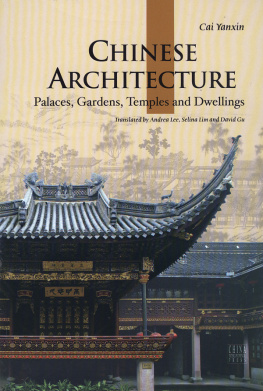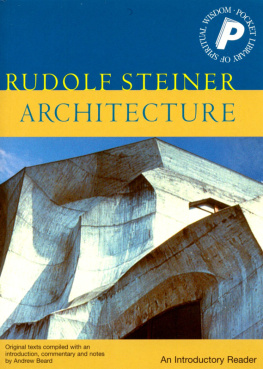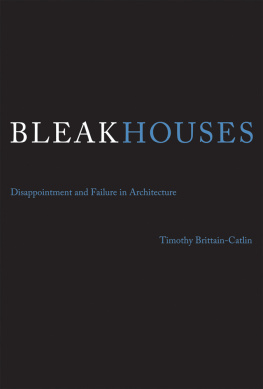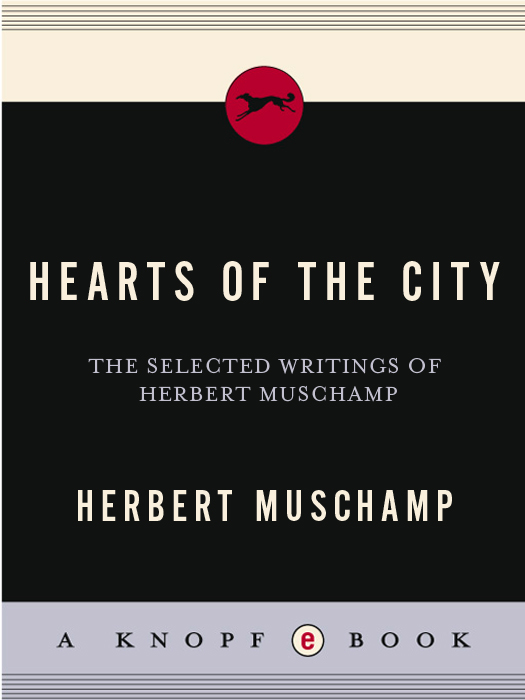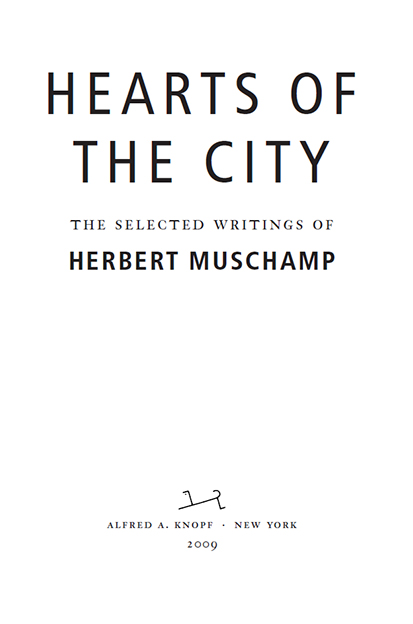ALSO BY HERBERT MUSCHAMP
File Under Architecture
Man About Town: Frank Lloyd Wright in New York City
THIS IS A BORZOI BOOK
PUBLISHED BY ALFRED A. KNOPF
Copyright 2009 by The Estate of Herbert Muschamp
Introduction copyright 2009 by Nicolai Ouroussoff
All rights reserved. Published in the United States by Alfred A. Knopf, a division of Random House, Inc., New York, and in Canada by Random House of Canada Limited, Toronto.
www.aaknopf.com
Knopf, Borzoi Books, and the colophon are registered trademarks of Random House, Inc.
The articles on which a portion of this book is based originally appeared in The New York Times, and to the extent they are reprinted here, they are reprinted with permission. Inquiries concerning permission to reprint any article or portion thereof should be directed to The New York Times Company, News Services Division, The Times Agency, 620 Eighth Avenue, New York, New York 10018 or .
Other pieces in this book originally appeared in The New Republic and Artforum.
Library of Congress Cataloging-in-Publication Data Muschamp, Herbert.
[Essays. Selections]
Hearts of the city : the selected writings of Herbert Muschamp / by Herbert Muschamp. 1st ed.
p. cm.
ISBN 978-0375-40406-1
eBook ISBN: 978-0-307-27324-6
1. Architecture, Modern20th century. 2. Architecture, Modern21st century.
I. Title.
NA 680. M 872 2009
724.6dc22 2009021219
v3.1
CONTENTS
ACKNOWLEDGMENTS
This book would not have been possible without the help of many people. We want to thank Leon Wieseltier and Linda Gerth at The New Republic, Knight Landesman at Artforum, and, at The New York Times, Joe Lelyveld, Bill Keller, Jill Abramson, Sam Sifton, and Alex Ward for so generously making available Herbert Muschamps many pieces that we have used in this collection. All the pieces collected here appear as they were edited by Leon Wieseltier, Ingrid Sischy, Nora Kerr, Ariel Kaminer, and Myra Forsberg. We would like to thank John Rockwell and Julie Iovine and particularly Randy Bourscheidt, Lisa Dennison, Mirella Haggiag, and Amanda Burden, who were not only great friends to Herbert but also have offered advice and ideas, suggested material for this project, and been supportive from the start. And finally we owe a debt of gratitude to Michael Stout, Herberts great friend and executor, who has counseled us, opened files, and overseen this project all along.
INTRODUCTION
NICOLAI OUROUSSOFF
Herbert Muschamps death from lung cancer in 2007, at the age of fifty-nine, not only silenced one of the most unique voices in American criticism but also signaled the close of one of the most tumultuous periods in the recent history of architecture.
When Muschamp first began writing as a critic in the early 1980s, Postmodernism was only beginning to loosen its suffocating grip on the profession. The great talents of his generation were still mostly involved with theoretical work, unknown to the average American. By the time of Muschamps death, these architects were part of the mainstream, building luxurious residential towers, museums, and corporate headquarters around the world. The rebels had become the establishment.
This collection, which includes columns written for The New Republic, The New York Times, and Artforum, as well as excerpts from an unpublished book, reflects the extremes of that era, from its creative exuberance to its self-indulgent excesses. It reveals a mind at war with easy formulas and intellectual complacency. And if some of the columns seem less concerned with buildings than with the debates that surround them, it is because Muschamps aim was to provoke, and by doing so to open us up to new ideas.
As a critic, his greatest contribution may have been his liberal use of the subjective voice. He did not write with the cool detached eye of the omnipotent observer but as an active participant, someone who wanted, with his whole heart, to fall in love with the work he was writing about. He often placed himself at the center of a storyas a refugee from suburbia, a gay man in the cosmopolitan city, and a survivor of an AIDS-ravaged New York. And if this was maddening to some, it also enabled him to forge a powerful emotional bond with his audience.
The basic message was this: we are all subjective beings, individualistic, competitive, rootless, hungry, exhibitionistic, freakish, as he once put it. Architectureor at least the architecture that matteredwas as adept at expressing this inner turmoil as it was at defining the values we share as a society.
His devotion to the cosmopolitan city was forged in the suburbs. He was born in 1947 to an upper-middle-class family in suburban Philadelphiathe kind of community, as he writes in Hearts of the City, his unfinished book, where inhibition was mistaken for character. The suburbs were a place of constant anxiety and trauma, where a young gay Jewish boy was under constant assault from the disapproving gaze of WASP couples.
Cities meant freedom. In the 1950s, he began taking weekend train trips to New York, where he eventually fell in with Andy Warhols Factory crowd. He drifted from school to school, enrolling first at the University of Pennsylvania and then at Parsons School of Design in Manhattan. After a brief stint at Londons Architectural Association, he returned to Parsons, where he taught criticism in the late 1980s.
When Muschamp emerged onto the architectural scene, first as a writer for Artforum and then as a critic for The New Republic, American architecture was divided into two opposing poles: the sterile functionalism of late Modernism and a Postmodernist movement rooted in more traditional models. Muschamp had no desire to return to the tight, responsible world of the stern-faced modern fathers.
But Postmodernism, too, seemed like a dead end. If he was appreciative of the aesthetic freedom won by architects like Robert Venturi and Aldo Rossi in the 1960s, he scorned the movements turn to a false Classicism that seemed to deny that the modern world existed at all. That this was a misreading of history was disturbing enough. What was unforgivable was that these architects had squandered the aesthetic freedom they had won only a decade before.
By the mid-eighties, he wrote many years later, the movement had deteriorated into a career strategy for reactionaries, opportunists, and their deeply uncultivated patrons.
Muschamp felt a close kinship with those designers who came of age during the student uprisings of 1968, architects like Koolhaas, Hadid, Wolf Prix, Thom Mayne, Frank Israel, and Eric Owen Moss. Unlike their Modernist fathers, these architects did not seek to smooth over differences; their desire was to expose the conflicts that existed at the core of society and that gave the city its vibrancy and meaning. Their aim was to make room for the dark subconscious forces that the Modernists often suppressed.
Muschamp saw projects like Jean Nouvels Cartier Foundation in Paris as part of a Surrealist tradition that blurred the border between waking reality and the dream state. The warped ramps of Koolhaass unbuilt design for the Jussieux Library in Paris were not only a psychological provocation but a form of social therapy as well.
It was Frank Gehrys work, however, that brought out Muschamps most rapturous writing. Muschamp sometimes referred to Gehry as a father figure, and he saw him as the standard bearer of an American, democratic architecture. Like Frank Lloyd Wright, Gehry sought to create forms that reflected a culture unfettered by binding, worn-out traditions. But if Wrights vision of America celebrated the spirit of individual freedom embodied in the nations endless landscapes, Gehry spoke for a generation that had found itself trapped once again, this time in the monotonous conformity of suburban California. The intentionally crude, fragmented forms of his early housescobbled together out of chain link, plywood, and galvanized metalexpressed not just the hidden tensions that threatened to break down the traditional nuclear family but also a desire to regain lost freedom.


